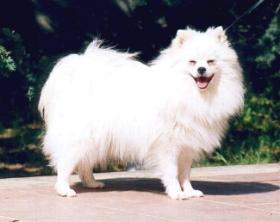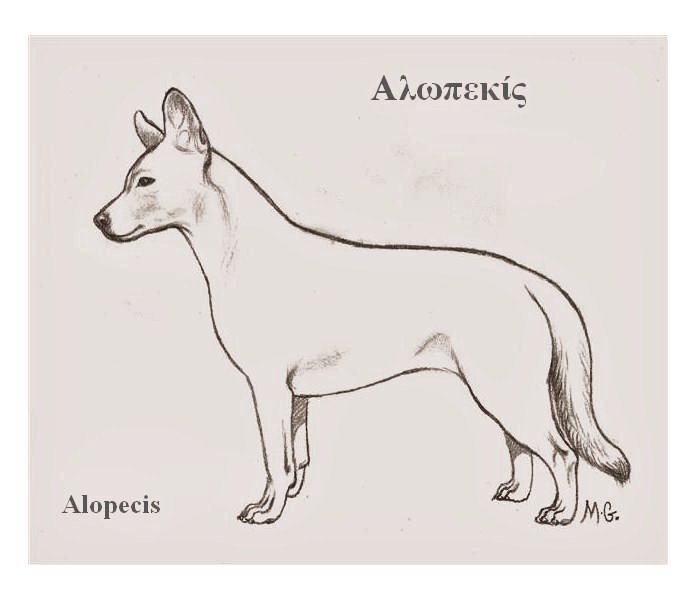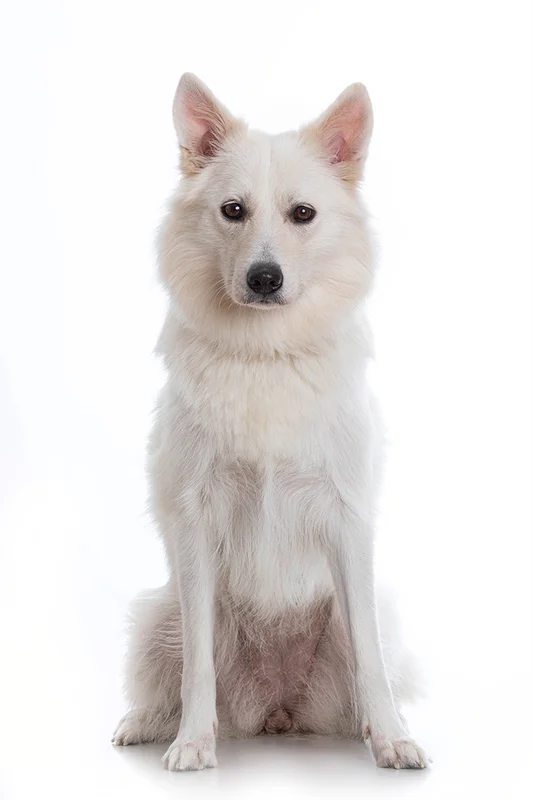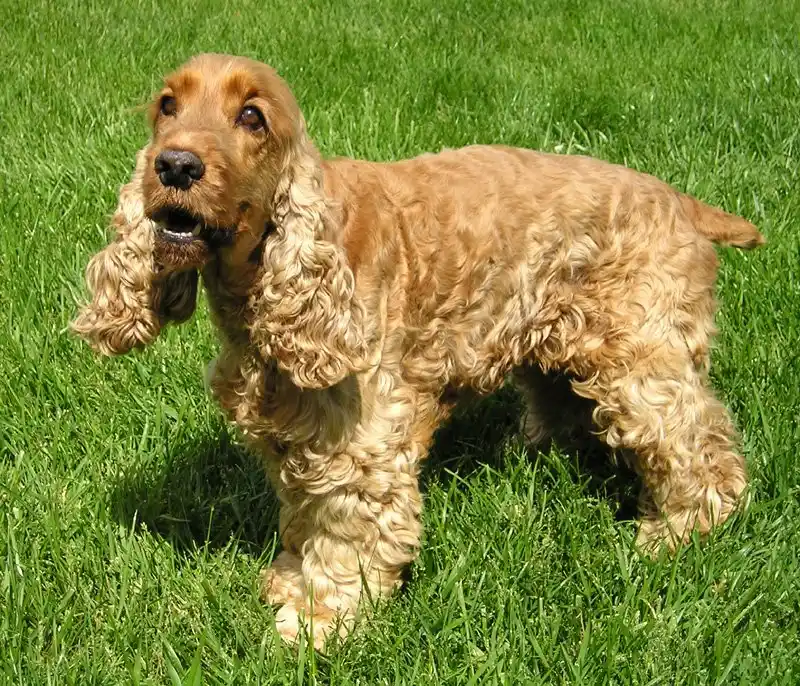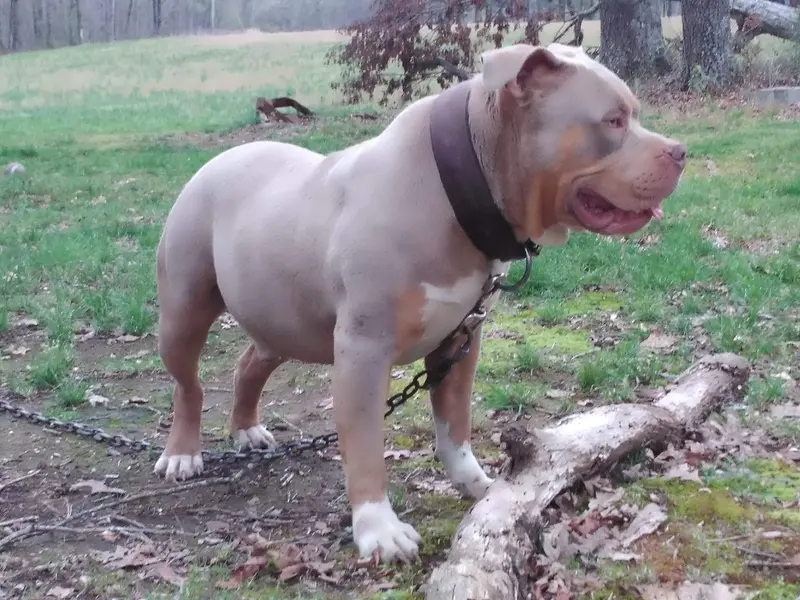Indian Spitz
The Indian Spitz is a small, intelligent breed known for its playful and affectionate nature. With origins in India, they adapt well to various living environments and excel in training, making them ideal family pets.
Overview
🐕Breed Overview
✨Key Traits
💡What Makes Indian Spitz Special
The Indian Spitz stands out for its adaptability to various living environments, from apartments to larger homes. Their intelligence allows them to excel in training and dog sports, making them a versatile companion.
They are known for their playful demeanor, often engaging in games and activities that stimulate both their minds and bodies. Their affectionate nature makes them great family pets, as they enjoy being part of family activities and forming strong bonds with their human companions.
Additionally, their alertness and protective instincts contribute to their reputation as reliable watchdogs, ensuring that they remain vigilant and attentive to their surroundings.
The Indian Spitz is a charming and intelligent breed that has captured the hearts of dog lovers in India and beyond. With its origins tracing back to the British colonial era, this spitz-type dog was developed from German Spitz stock to adapt to the Indian climate. The Indian Spitz is often confused with the Pomeranian, but it is a distinct breed with unique characteristics.
Known for its playful and affectionate nature, the Indian Spitz is an excellent family companion, thriving in both urban and rural settings. 75 to 18 inches at the withers and weighing between 11 to 45 pounds, depending on whether it is a Lesser or Greater Indian Spitz. Its coat is typically milk white, though it can also be found in solid colors like black and dusky brown.
The breed's conical snout and pointed ears give it a distinctive look that is both endearing and alert. The Indian Spitz is known for its high intelligence and adaptability, making it easy to train. They excel in various activities, from agility to obedience, and enjoy engaging with their families.
Regular exercise is essential to keep them happy and healthy, with daily walks and playtime being crucial components of their routine. Despite their small size, Indian Spitzes are alert and make excellent watchdogs, often barking to alert their owners of any unusual activity. Their friendly demeanor makes them great with children and other pets, provided they are socialized from a young age.
With a lifespan of 10 to 14 years, the Indian Spitz is a resilient breed that thrives on companionship and interaction. Their adaptability to different living environments, coupled with their playful and affectionate nature, makes them a perfect choice for families and individuals alike. Whether in a bustling city apartment or a spacious farmhouse, the Indian Spitz is sure to bring joy and companionship to any home.
🎉Fun Facts
An Indian Spitz named Tuffy played a significant role in the Bollywood film 'Hum Aapke Hain Koun..!'
The breed gained popularity in India during the 1980s and 1990s due to import restrictions on other breeds.
The Indian Spitz is often mistaken for a Pomeranian, but they are distinct breeds with different characteristics.
They are known for their ability to learn tricks quickly and understand human intentions.
They can live up to 16 years with proper care.
Breed Characteristics
Family & Friends
Good Behavior
Get Up & Go
Household Harmony
Temperament & Personality
✨Key Traits
🐕Core Temperament
The Indian Spitz is characterized by its friendly and outgoing temperament. They are social dogs that thrive on interaction with their families and other pets.
Their playful nature makes them great companions for children, as they enjoy engaging in games and activities. While they can be protective and alert, they are generally not aggressive and are more likely to greet strangers with curiosity than hostility.
Early socialization is essential to ensure they develop into well-rounded adults, as it helps them become comfortable in various situations and with different people.
💫Personality Profile
The Indian Spitz is known for its vibrant and engaging personality. They are highly intelligent and eager to please, making them relatively easy to train. Their playful nature means they enjoy interactive games and activities with their families.
This breed is also affectionate, often forming strong bonds with their owners and seeking companionship. They are alert and will bark to alert their families of any unusual activity, making them excellent watchdogs. Despite their small size, Indian Spitzes are confident and can be quite vocal, expressing their excitement or concerns through barking.
They thrive on social interaction and do well with children and other pets when properly socialized.
🔊Vocal Tendencies
The Indian Spitz has a moderate noise level, often barking to alert their owners of any unusual activity or to express excitement. They may bark when greeting visitors or during playtime, but excessive barking can be managed through training and socialization.
Their vocalizations can vary from playful barks to alert barks, and they are generally responsive to commands to quiet down when necessary. While they are not known for being excessively noisy, their alert nature means they will vocalize when they perceive something out of the ordinary.
Affection & Social Traits
Energy & Activity
Communication Style
Care Requirements
🏃♂️Exercise Requirements
Daily Exercise
The Indian Spitz is an active and energetic breed that requires regular exercise to maintain its physical and mental well-being. Ideally, an adult Indian Spitz should engage in at least 30 to 60 minutes of exercise daily.
This can be broken down into multiple sessions throughout the day, including brisk walks, playtime in a secure area, or engaging in dog sports such as agility or obedience training. Puppies may require shorter, more frequent play sessions to accommodate their developing bodies, while senior dogs may benefit from gentler activities to avoid strain.
Regular exercise not only helps manage their weight but also reduces the likelihood of behavioral issues stemming from boredom or pent-up energy. Insufficient exercise can lead to destructive behaviors, anxiety, and obesity, making it crucial for owners to prioritize physical activity for their Indian Spitz.
Preferred Activities
🏠Living & Adaptability
Space Requirements
The Indian Spitz is adaptable to various living environments, making it suitable for both apartments and larger homes. While they can thrive in smaller spaces, it is essential to provide them with ample opportunities for exercise and mental stimulation.
A small yard or nearby park can suffice, but they should have regular access to open areas where they can run and play. In larger homes, they enjoy having space to roam and explore.
Owners in urban settings should ensure their dogs receive sufficient outdoor time to prevent boredom and anxiety, as confinement can lead to destructive behaviors.
Climate Preference
🍲Feeding Guide
Schedule
Food Types
Portion Size
Special Nutritional Needs
The Indian Spitz has no specific dietary restrictions but benefits from a balanced diet rich in protein, healthy fats, and carbohydrates. Owners should monitor their dog's weight and adjust portion sizes accordingly. Some Indian Spitzes may have sensitivities to certain ingredients, so it's essential to observe their reactions to new foods and consult a veterinarian if any issues arise.
✨Grooming Requirements
Grooming Overview
The Indian Spitz has a double coat that requires regular grooming to keep it healthy and free from mats. Their coat is less dense than that of other spitz breeds, making it easier to manage.
Brushing should be done at least once a week to remove loose hair and prevent tangles. During shedding seasons, more frequent brushing may be necessary to control shedding.
Bathing should be done as needed, typically every 4-6 weeks, to maintain cleanliness without stripping the coat of its natural oils. Regular nail trimming and ear cleaning are also essential to keep the dog comfortable and healthy.
Care Schedule
Brush weekly; bathe every 4-6 weeks; trim nails every 2-4 weeks.
Health Profile
⚕️Health Care
Regular veterinary care is crucial for the Indian Spitz to maintain optimal health and longevity. Routine check-ups, vaccinations, and preventive treatments can help detect and address health issues early on.
Owners should also be proactive in managing their dog's weight and dental health, as these factors significantly impact their overall well-being and lifespan. Regular exercise and a balanced diet are essential components of a healthy lifestyle for this breed.
Health Issues Overview
⏳Average Lifespan
Genetic Factors
Genetics play a significant role in the lifespan of the Indian Spitz. Responsible breeding practices can help reduce the risk of hereditary health issues, ensuring that puppies are less likely to inherit genetic conditions. Potential owners should seek reputable breeders who conduct health screenings and prioritize genetic diversity to promote a healthier breed overall.
Living Conditions
The Indian Spitz thrives in environments that provide ample opportunities for exercise and social interaction. Living in a home with a yard or access to parks can enhance their quality of life and longevity.
They adapt well to both urban and rural settings, but regular outdoor activities are essential to keep them physically fit and mentally stimulated. A lack of exercise and socialization can lead to behavioral issues and a shorter lifespan, so owners should prioritize an active lifestyle for their dogs.
🏥Common Health Issues
Obesity
Warning Signs
🔬Diagnosis
Veterinary examination and weight assessment.
💊Treatment
Dietary changes and increased physical activity.
📝Management Tips
Maintain a balanced diet and regular exercise routine to prevent weight gain.
Dental disease
Warning Signs
🔬Diagnosis
Veterinary dental examination.
💊Treatment
Dental cleaning and possible extractions.
📝Management Tips
Regular dental care, including brushing and professional cleanings.
Hip dysplasia
Warning Signs
🔬Diagnosis
X-rays and veterinary examination.
💊Treatment
Weight management and pain relief medications.
📝Management Tips
Maintain a healthy weight and provide joint supplements as needed.
🛡️Preventive Care
🔬General health screening.
A comprehensive health evaluation to assess overall health and identify potential genetic issues.
📅 Annually after the age of 1 year.
🔬Hip evaluation.
An assessment of hip joint conformation to detect hip dysplasia, a common condition in many breeds.
📅 At 12-18 months of age, and as needed thereafter.
🔬Dental check-up.
A dental examination to assess oral health and prevent dental disease.
📅 Every 6-12 months, depending on dental health.
Training
🧠Intelligence & Trainability
💪Work Drive
The Indian Spitz has a moderate work drive, enjoying tasks that challenge its intelligence and physical abilities. Activities such as agility training, obedience trials, and interactive games can keep them mentally stimulated.
Providing puzzle toys or engaging in scent work can also satisfy their need for mental engagement. Without sufficient stimulation, they may resort to boredom-related behaviors, so it's essential to incorporate a variety of activities into their routine.
⚠️Training Considerations
While the Indian Spitz is generally easy to train due to its intelligence, some common challenges include stubbornness and a tendency to become easily distracted. To overcome these challenges, owners should employ positive reinforcement techniques, such as treats and praise, to motivate their dogs.
Consistent training sessions that incorporate fun and engaging activities can help maintain the dog's interest and focus. Socialization is also crucial, as it helps the Indian Spitz become well-adjusted and confident in various environments.
Early exposure to different people, pets, and situations can mitigate potential behavioral issues related to fear or anxiety.
📝Training Tips
Training an Indian Spitz can be a rewarding experience, as they are eager to please and quick learners. Start with basic commands such as sit, stay, and come, using positive reinforcement to encourage good behavior.
Keep training sessions short and engaging, ideally around 5-10 minutes, to maintain their attention. Incorporating play into training can also enhance their enthusiasm.
Socialization is vital; expose your Indian Spitz to various environments, people, and other animals to foster a well-rounded temperament. Consistency and patience are key, as this breed thrives on routine and clear expectations.
History & Heritage
📜Origin Story
The Indian Spitz's journey began with the British colonization of India, where they brought along various breeds, including the German Spitz. As these dogs adapted to their new environment, breeders in India focused on creating a smaller, more resilient version that could withstand the country's diverse climate.
The Indian Spitz emerged as a beloved companion, known for its intelligence and playful nature. Over the years, it became a staple in Indian households, often mistaken for the Pomeranian due to its similar appearance, despite the significant differences between the two breeds.
The Indian Spitz's charm and adaptability have made it a cherished member of many families across India.
⏳Development History
The Indian Spitz was introduced to India by British colonizers who began breeding them from a stock of German Spitzes. Over the years, selective breeding adapted the breed to the Indian climate, resulting in a smaller size and a less dense coat compared to its German relatives.
This evolution made the Indian Spitz well-suited for the plains of India, where it could thrive in the hot and humid conditions. The breed has since been recognized as a distinct Indian breed by the Kennel Club of India, which is working towards gaining recognition from international kennel clubs.
🛡️Purpose & Historical Role
Originally bred as companion dogs, the Indian Spitz has also served as a watchdog due to its alert nature and protective instincts. Its intelligence and trainability have allowed it to excel in various roles, including obedience and agility competitions. The breed's friendly disposition makes it an excellent family pet, while its loyalty and vigilance ensure it remains a reliable guardian.
🏺Cultural Significance
The Indian Spitz holds a special place in Indian culture, particularly during the 1980s and 1990s when it became one of the most popular dog breeds in the country. Its rise in popularity coincided with strict import regulations that limited the availability of other breeds, leading many families to adopt the Indian Spitz as their companion.
' where a notable Indian Spitz named Tuffy played a significant role. This cultural representation has further solidified the breed's status as a beloved companion in Indian households.
Conservation Status
This breed is well-established with healthy population numbers.
